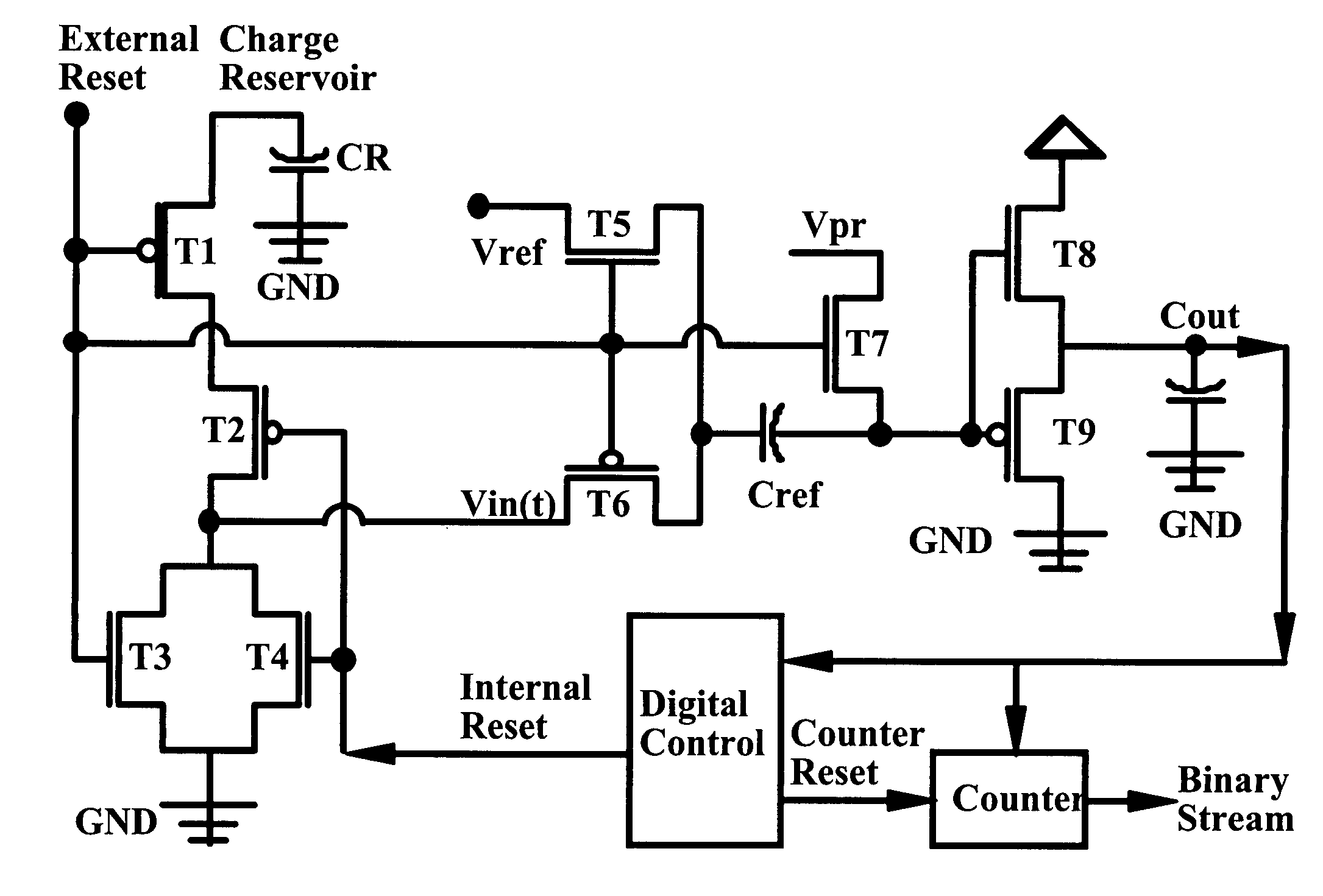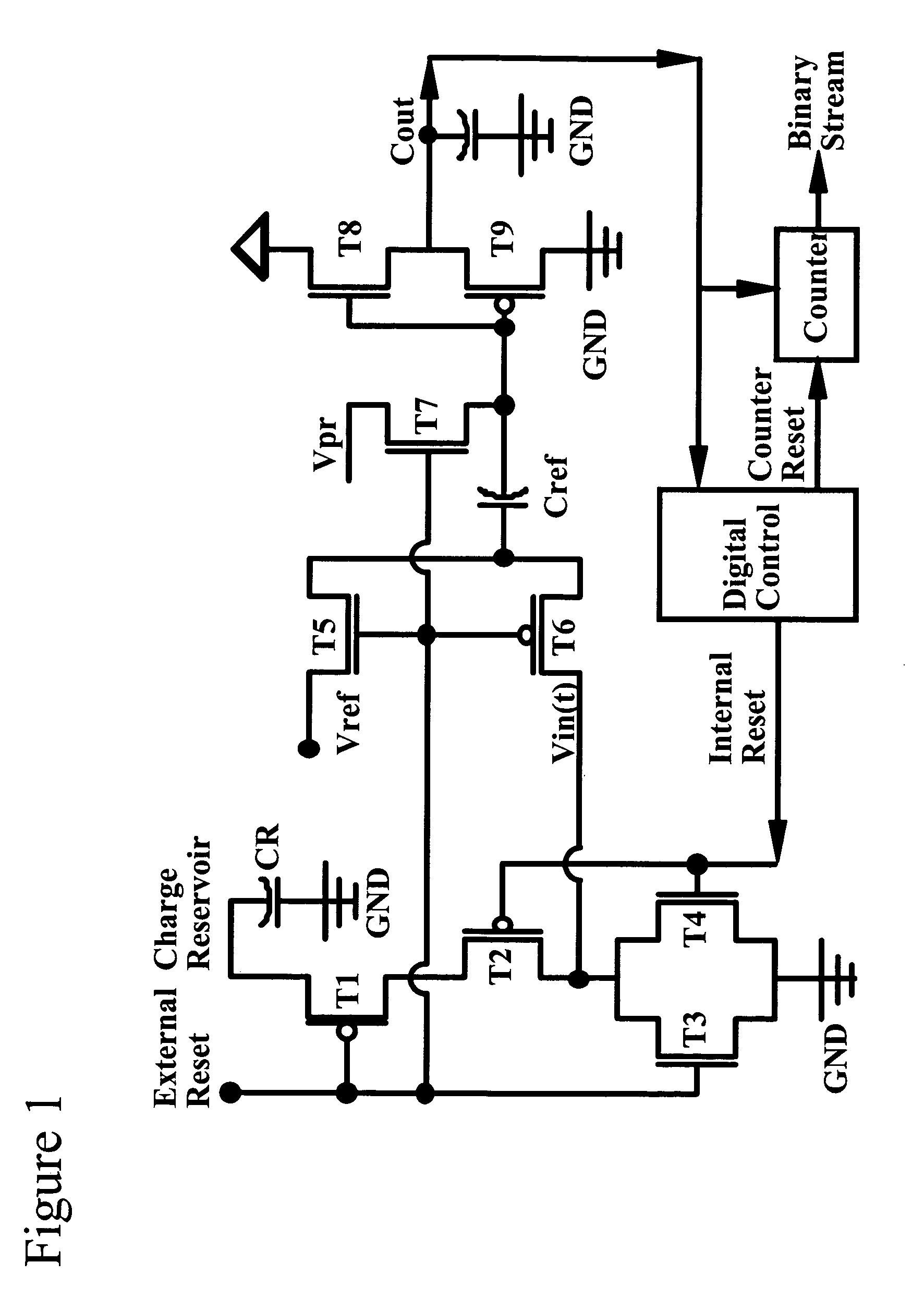Asynchronous serial analog-to-digital converter methodology having dynamic adjustment of the bandwidth
a technology dynamic adjustment, which is applied in the field of asynchronous serial analog-to-digital converter methodology having dynamic adjustment of the bandwidth, can solve the problems of increasing the cost of large number of conversion bits, and the need for analog subtraction, so as to achieve minimal circuit activity and minimal power dissipation
- Summary
- Abstract
- Description
- Claims
- Application Information
AI Technical Summary
Benefits of technology
Problems solved by technology
Method used
Image
Examples
Embodiment Construction
Analog-to-Digital Conversion Methodology for Charge Signals.
[0051]When applied to charge signals, the method of the present invention quantizes the amount of charge present in a “charge reservoir” by subtracting a pre-defined small amount (a “packet”) of charge from said reservoir. For as long as the amount of charge in the reservoir is larger than a “packet of charge”, one more “packet of charge” can be subtracted from the reservoir. The quantization process consists in counting the total amount of packets that are removed from the reservoir.
[0052]Even though the amount of charge in the “reservoir” is an analog quantity, because the “packet of charge” is a known, precisely defined quantity, the charge-subtraction is itself a “digital process”. In other words, the conversion process works by subtracting a small “digital amount” of charge from an analog charge reservoir.
[0053]A packet of charge is defined through the pre-charging of the input capacitor (Cref) of the comparator. The v...
PUM
 Login to View More
Login to View More Abstract
Description
Claims
Application Information
 Login to View More
Login to View More - R&D
- Intellectual Property
- Life Sciences
- Materials
- Tech Scout
- Unparalleled Data Quality
- Higher Quality Content
- 60% Fewer Hallucinations
Browse by: Latest US Patents, China's latest patents, Technical Efficacy Thesaurus, Application Domain, Technology Topic, Popular Technical Reports.
© 2025 PatSnap. All rights reserved.Legal|Privacy policy|Modern Slavery Act Transparency Statement|Sitemap|About US| Contact US: help@patsnap.com



